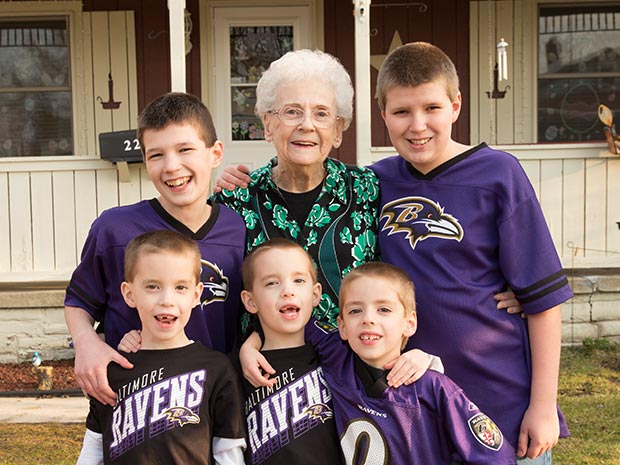
Rose Warefield couldn't walk from room to room in her home without getting completely out of breath. If the 79-year-old went shopping with one of her daughters, she had to wait in the car because she couldn't walk through the grocery store, even leaning on the cart, without struggling to breathe. Warfield suffered from aortic stenosis, a condition in which the leaflets on the aortic valve harden with calcium and become inflexible. These calcified leaflets cause the valve to be narrowed, which forces the heart to pump harder to maintain a healthy blood flow throughout the body. If left untreated, the heart may become too weak to work properly, leading to serious heart problems. Warfield's valve was irreparably damaged and no longer worked properly.
Although her cardiologist recommended valve replacement five years ago, she was hesitant because she'd had open heart surgery to repair an aortic aneurysm 17 years ago and was worried about going through the long, difficult recovery process again. Then her cardiologist referred her to John Wang, MD, an interventional cardiologist and chief of the Cardiac Catheterization Laboratory at MedStar Union Memorial. Dr. Wang had the solution-” transcatheter aortic valve replacement (TAVR).
TAVR delivers better outcomes for the sickest patients
Dr. Wang and the heart team at MedStar Heart & Vascular Institute at MedStar Union Memorial reviewed Warfield's case and determined that she was a good candidate for TAVR. The procedure is for patients who have severe, symptomatic aortic stenosis and are too ill to undergo traditional open heart valve replacement.
The heart team that assesses whether a patient is a good candidate for TAVR includes general cardiologists, cardiac surgeons, interventional cardiologists, cardiac anesthesiologists, and the valve program coordinator. "We carefully consider each patient's case and make a decision as to which treatment approach is most appropriate" whether that's medications, traditional open heart surgery or TAVR," says Dr. Wang. "Patients can take comfort knowing they will receive the best therapy for their condition."
In TAVR, a tiny incision the width of a pencil is made in the patient's groin, and a thin catheter with a collapsed replacement valve mounted on the end is inserted into the artery and guided to the patient's aortic valve. The replacement valve is inserted into the patient's damaged valve and expanded, like an umbrella. The new valve easily takes over the task of regulating blood flow.
“The real advantages of TAVR are that the chest is not opened, the heart is not stopped during surgery, and the patient is not placed on a heart-lung machine,” explains Dr. Wang. “Those factors make this surgery much safer, with a significantly shorter recovery period, and overall is a better option for patients who are considered high risk.” The MedStar Heart & Vascular Institute at MedStar Union Memorial has a tremendous amount of experience and success with this procedure. We’ve even performed this procedure on very ill and extremely elderly patients who are 97 and 100 years old with excellent results. Additionally, we are involved in multiple clinical trials evaluating the next generation of minimally invasive heart valves.
Because the procedure is minimally invasive and takes less than an hour to perform, patients recover more quickly, usually spending just one or two days in the hospital. Warfield says shewas walking around the day after surgery without feeling out of breath for the first time in years.
Two weeks after the procedure, she and her daughter were out shopping.
"We spent a good part of the day shopping. We went out for lunch, and I felt good," she says. "I haven't been able to do that for two years. There's so much I missed that I' m looking forward to being able to do-going to the ocean with my daughters and grandchildren, and babysitting my youngest daughter's five-year-old triplets. I tell everyone, if you need this surgery, don't wait. I'm so grateful to have my life back."













